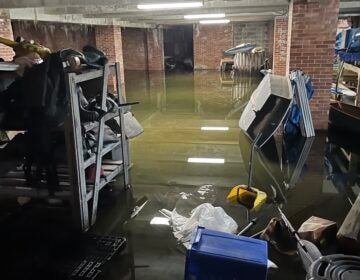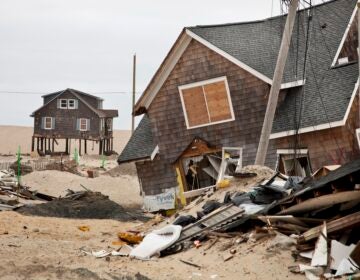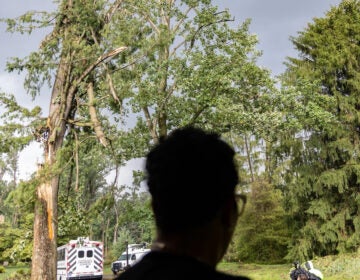Isaias poured floodwaters on the Heinz Refuge in August. It’s been rising above them since
Rain from Tropical Storm Isaias sent Darby Creek overflowing. More than 3 months and a major restoration effort later, things are almost the way they were.
Listen 1:19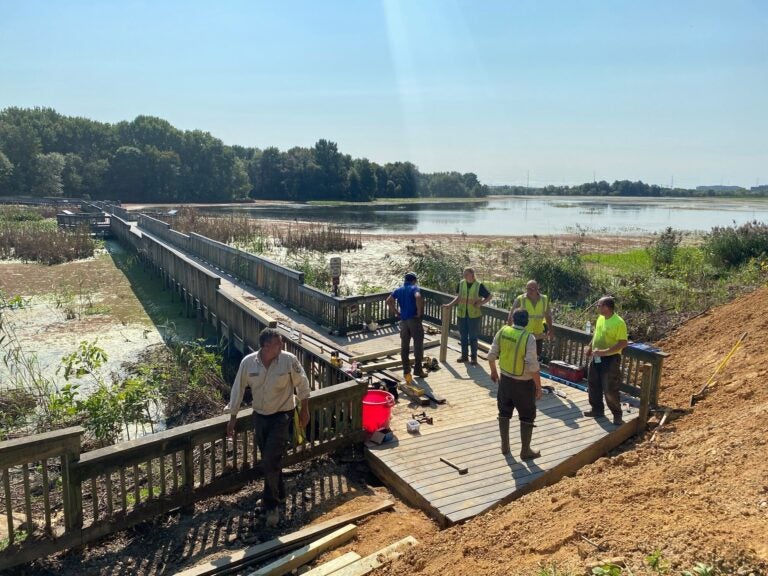
A team at the Heinz National Wildlife Refuge restoring ‘the water control structure.’ (Courtesy of the John Heinz National Wildlife Refuge at Tinicum)
Check out our Watershed Watch series for more stories.
Linda Blythe has been hiking in the John Heinz National Wildlife Refuge for over 40 years.
In that time, she’s witnessed a lot of changes at the wildlife refuge in Tinicum Township, Delaware County, near Philadelphia International Airport. But not many were like the havoc wreaked by Tropical Storm Isaias on Aug. 4.
“For the second time in my lifetime, Darby Creek overflowed in Heinz National Wildlife Refuge,” Blythe said.
More than three months and a major restoration effort later, things at the refuge are almost back to the way they were before that day.
Darby Creek, a tributary of the Delaware River, runs through the refuge. Heavy rains from Isaias caused the creek to overflow into Philadelphia’s Eastwick neighborhood as well as the refuge’s entrance way and most of its major trails.
The water covered the boardwalk that crosses the impoundment where visitors to the refuge watch birds, the boardwalk staircase “turned into a waterfall,” and the “embankment just washed away,” Blythe told WHYY News.
Blythe, 63, who lives in West Philadelphia, volunteers as a “weed warrior,” protecting the refuge from invasive species. Before COVID-19, she visited there every week. A few days after Isaias, she saw damage to the habitat and litter brought in from Darby Creek hanging from the trees.
You could see “trash bags that are five feet above where you’re standing on the trail. So that shows the high-water mark,” said Blythe.
On Aug. 4, refuge manager Lamar Gore waded through the water gushing into the impoundment from the Dike Trail.
The creek was bound to flood, Gore said in an interview this month, because of what he called a “magical mixture” in August — the simultaneous tropical storm, full moon and high tide. But those weren’t the only reasons for the extreme flooding.

Darby Creek flows into Tinicum Marsh in the center of the refuge, the largest freshwater marsh in Pennsylvania. The marsh used to be about 6,000 acres and is now only 200 acres because of development — the City of Philadelphia displaced thousands of people to develop Eastwick, a predominantly Black neighborhood, over the marshland, which has flooded more than 10 times in the last 20 years.
Tidal marsh is meant to slow down and absorb floodwater. But now, there isn’t enough marsh to do the job, especially as rainfall intensity continues to increase in the northeastern United States.
“Back in the day, I don’t think folks had a good grasp of how much damage they could cause by building on the lower part of a watershed,” said Gore. It’s common all over the country: People build over marshes for roads and homes, like in Eastwick, and airports, like PHL.
Parts of the damaged habitat are already regrowing, according to Gore. He doesn’t think there is any long-term damage to the animal populations.
The animals are resilient, Gore said.
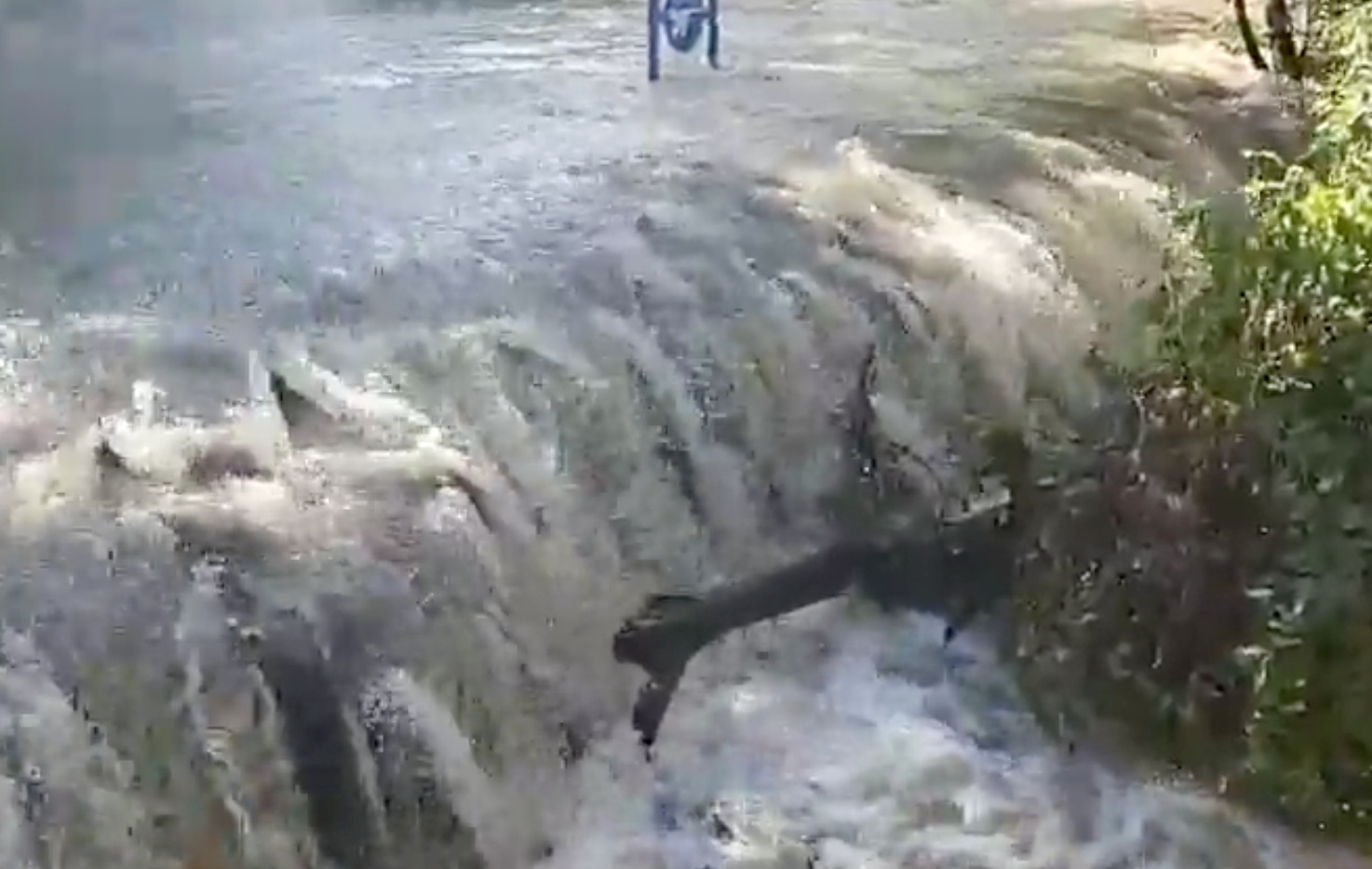
U.S. Fish and Wildlife Service maintenance professionals from three other refuges and from the Heinz regional office came together to help on the “maintenance action team.” They closed the refuge and spent three weeks repairing the roads.
After Isaias, the paths were too dangerous to enter. Now, they’re accessible again.
Prepping for the next big storm
With more funding, refuge officials hope to replace the roads’ porous materials with clay. Clay can better withstand flooding, Gore said. But all this is just a short-term solution.
“The long-term solution is to try to create more tidal marsh,” he said, and that plan is “expensive and difficult” and involves the Eastwick community.
In 2018, Gore worked with the community and consultants Interface Studio and Scott Bishop of Bishop Land Design to develop the “Lower Eastwick Public Land Strategy,” which proposed excavating the nonresidential lower area of Eastwick and building a freshwater marsh.
According to Bishop, a landscape designer and human ecologist, “This redevelopment would add further ecological function and potential improvements to flood protection that would go hand-in-hand with the wildlife efforts at the refuge.”
After Tropical Storm Isaias, City Councilmember Kenyatta Johnson, who represents the Eastwick neighborhood, revived the strategy and put together a task force to start moving on it.
For now, members of the Heinz team are focusing on what they can control: marsh restoration inside the refuge’s borders. (The project won’t mitigate much of the flooding in Eastwick, which occurs before the water reaches the refuge, according to Gore.) They’re first hoping for a full hydrology study so they can test their ideas.
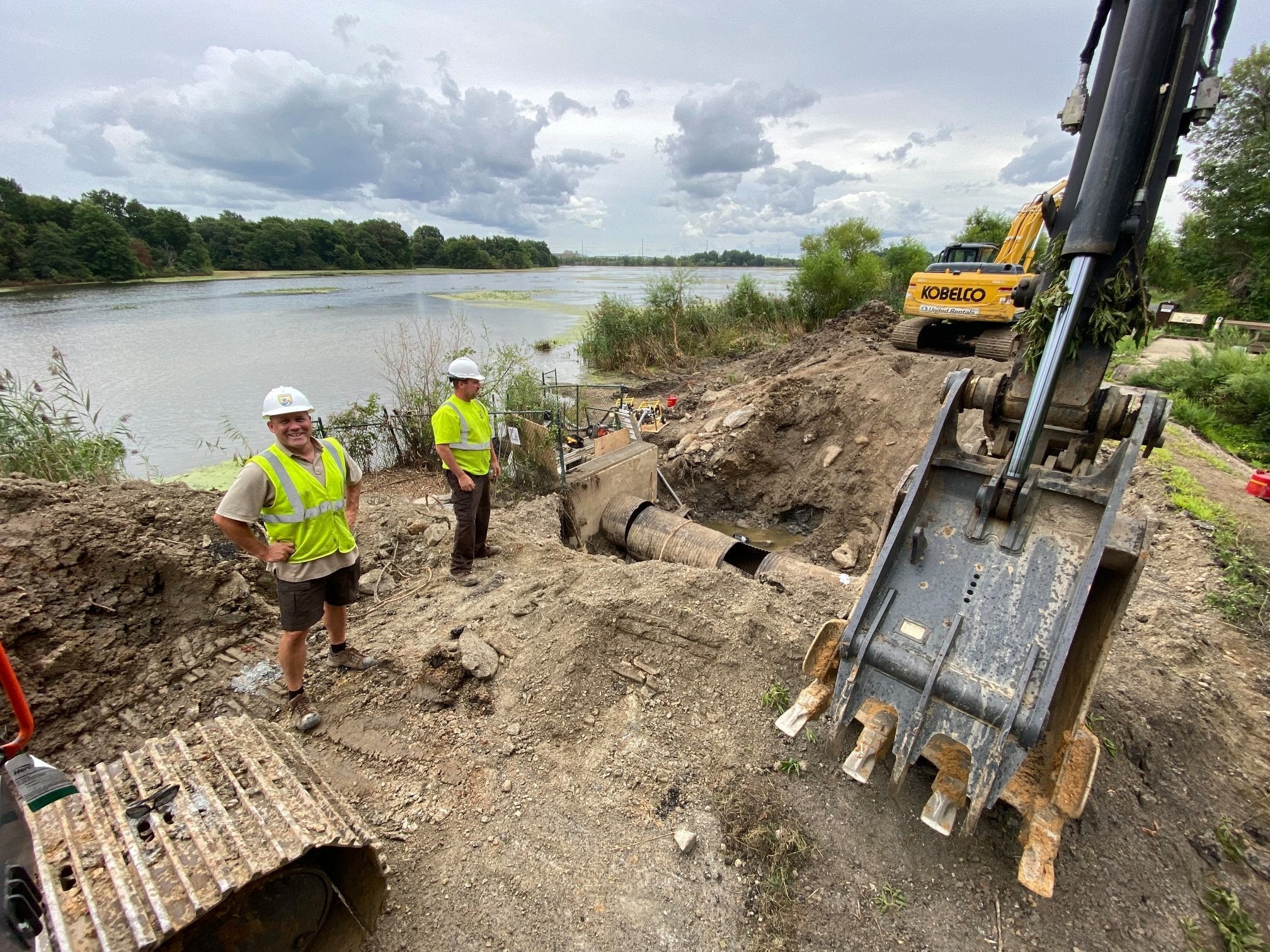
They could raise the Heinz trail system in at least two areas by 6 or 7 feet, cut two holes into that raised trail structure to allow the water to flow through, and then build two bridges so visitors could still walk around the refuge. They must allow “the water to go where it wants to go … without causing damage,” said Gore.
Bart Wilson, a coastal geologist and the U.S. Fish and Wildlife Service project manager for Delaware’s coastal complex, is assisting Heinz with the marsh restoration effort.
“It’s going to function like a natural tidal freshwater marsh,” said Wilson. “Where the tide comes in, it moves through the system and then comes out without creating flooding issues or creating areas where the water just builds up and kills vegetation.”
The Heinz team is waiting for more federal funding to complete the project, however.
“You’re always looking for additional funding because you want to make sure you’ve got the project done as you’ve designed it, not just a piece of it, for the thing to function as you want it to,” said Wilson.
Gore is determined to make these long-term changes because “short-term fixes can cause more damage to the habitat,” he said. There’s a 50/50 chance they will get the funding, “it’s a role of the dice,” he said.
Wilson is a bit more optimistic, “I think we’re well on our way towards it. But nothing is 100% solidified.”
Said Gore, “Some of the problems can be alleviated by just bringing the right folks to the table, people who understand wetlands, not just those folks that are looking for a really quick fix.”
The aim is solutions that work for everyone involved. “The first thing that we have to think about is the safety of people, the safety of infrastructure, and the habitat.”
The reporting for this story is part of the broader “From the Source” project, supported by the Lenfest Institute, the National Geographic Society, and the William Penn Foundation.
Reporting also was made possible by the Foundation for Delaware County.
Linda Blythe’s story came to WHYY via a response to a callout asking how rivers and creeks in the area are changing. Get in touch and let us know what you’re seeing.

Get daily updates from WHYY News!
WHYY is your source for fact-based, in-depth journalism and information. As a nonprofit organization, we rely on financial support from readers like you. Please give today.



